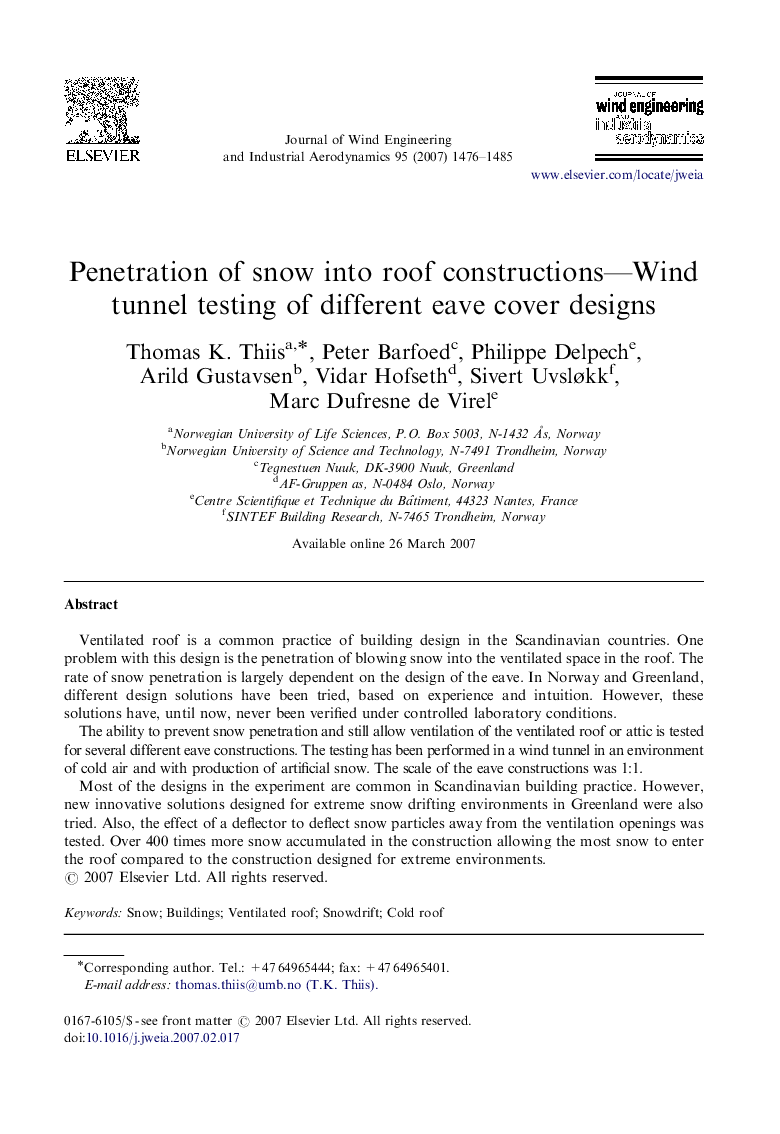| Article ID | Journal | Published Year | Pages | File Type |
|---|---|---|---|---|
| 293547 | Journal of Wind Engineering and Industrial Aerodynamics | 2007 | 10 Pages |
Ventilated roof is a common practice of building design in the Scandinavian countries. One problem with this design is the penetration of blowing snow into the ventilated space in the roof. The rate of snow penetration is largely dependent on the design of the eave. In Norway and Greenland, different design solutions have been tried, based on experience and intuition. However, these solutions have, until now, never been verified under controlled laboratory conditions.The ability to prevent snow penetration and still allow ventilation of the ventilated roof or attic is tested for several different eave constructions. The testing has been performed in a wind tunnel in an environment of cold air and with production of artificial snow. The scale of the eave constructions was 1:1.Most of the designs in the experiment are common in Scandinavian building practice. However, new innovative solutions designed for extreme snow drifting environments in Greenland were also tried. Also, the effect of a deflector to deflect snow particles away from the ventilation openings was tested. Over 400 times more snow accumulated in the construction allowing the most snow to enter the roof compared to the construction designed for extreme environments.
